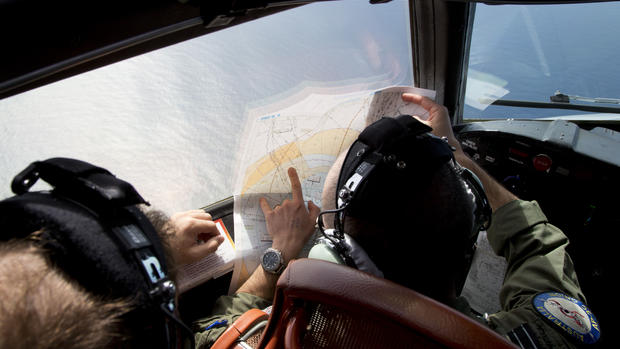After nearly 6 months, new clue in Malaysia Airlines Flight 370 search
CANBERRA, Australia -- Just weeks before the hunt for the missing Malaysian airliner is set to resume, an Australian official said Thursday that the sprawling search area in the southern Indian Ocean may be extended farther south based on a new analysis of a failed attempt to call the plane by satellite phone.
Australian Deputy Prime Minister Warren Truss said the analysis of the call, attempted by Malaysia Airlines officials on the ground soon after Flight 370 disappeared from radar, "suggests to us that the aircraft might have turned south a little earlier than we had previously expected."
The Boeing 777 disappeared after veering off its northerly course from Kuala Lumpur to Beijing on March 8, and has become one of aviation history's most stunning mysteries. It is thought to have crashed 1,100 miles off Australia's west coast, but no trace of the plane or the 239 people aboard has been found.
The overall search area remains unchanged, Truss said. However, Australian Transport Safety Bureau chief commissioner Martin Dolan said he would meet with international experts next week to decide whether the 23,000-square mile targeted search area should be extended or shifted south based on the new analysis.
"We think we may extend that area farther south; that's the thing we're currently considering," Dolan told The Associated Press.
The new analysis applies to satellite data from the first of two satellite phone calls Malaysia Airlines ground staff attempted to make to Flight 370's crew.
Investigators have long been aware of the phone calls, but it has taken until recently for them to develop methods to analyze the phone data to glean clues about the plane's direction. It was through a similar analysis of satellite data from the plane's jet engine transmitter that investigators were able to define the current search area.
By the time the calls were attempted, the plane had become invisible to civilian radar. It had flown west without communications past Sumatra and beyond the range of Malaysian military radar.
Dolan said the new analysis suggested the jet was already flying south when the first phone call was attempted, less than 20 minutes after the plane dropped off military radar.
"Previously, there was the possibility that it could have been quite a bit later, so we had to do our modeling based on a range of possibilities as to where the aircraft turned," Dolan said.
"We're now more confident that it turned comparatively early. That does make a difference to how we prioritize the search along the seventh arc," he added, referring to the broad area where investigators believe the flight ran out of fuel and crashed, based on the last ping from the jet engine transmitter.
After spending weeks combing through satellite data, investigators said they are confident the plane was on autopilot when it crashed.
"Certainly for its path across the Indian Ocean, we are confident the aircraft was on autopilot until it ran out of fuel," Dolan said in June.
CBS News correspondent Jeff Pegues reported that authorities expect the search to take up to a year, maybe longer.
Investigators are attempting to calculate which parts of the search area should be examined first. The analysis adds weight to an Australian Transport Safety Bureau crash investigation report in June in which most of the modeling of the plane's potential flight paths factored in a relatively early switch to a southerly course.
The current search area covers a swath of ocean 435 miles long and 50 miles wide. An initial search of 330 square miles of seabed to the north ended with officials concluding that they were focusing their efforts in the wrong place.
Truss and Malaysian Transport Minister Liow Tiong Lai signed an agreement Thursday in Canberra on sharing the ongoing costs between the two countries as the search progresses to the expensive next phase, which could take up to a year and cost 52 million Australian dollars ($48 million).
Until now, each country involved in the search has been bearing its own costs.
In three weeks, Dutch contractor Fugro Survey Pty. Ltd. will begin the operation with three vessels towing underwater vehicles equipped with side-scan sonar, multi-beam echo sounders and video equipment, Truss said.
Liow said investigators had advised that success in the undersea search for wreckage and the aircraft's black boxes with cockpit voice recordings and flight data is crucial to solving the mystery of the disaster.
"The investigation cannot continue without the search result," Liow said.
"We need to find the plane, we need to find the black box in the plane so that we can have a conclusion in the investigation," he added.
Malaysia, as the country where the Boeing 777 was flagged, has overall responsibility for the crash investigation. But Australia has search and rescue responsibility.
Chinese Vice Minister of Transport He Jianzhong, who also attended the Canberra meeting, said the ministers agreed that the search will not be interrupted or given up. Most of the passengers - 153 - were Chinese.
